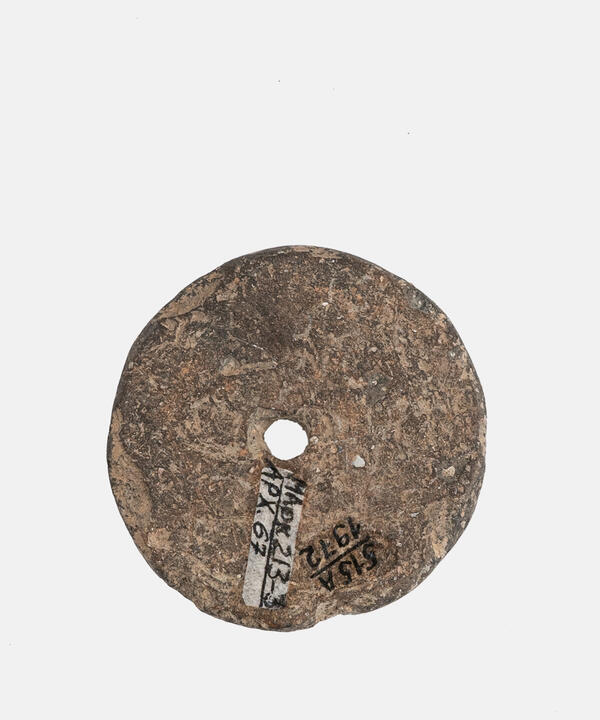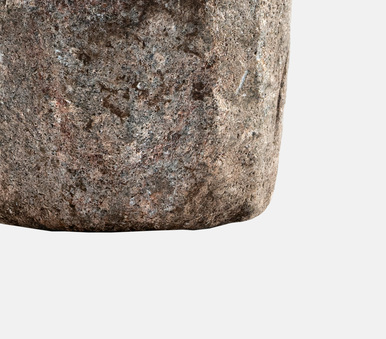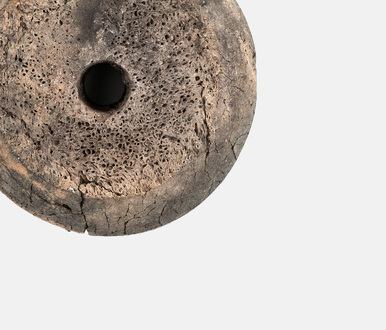The southern Trans-Ural region is rich in sources of materials on textile production of the Bronze Age. At the turn of the 2nd millennium BC in the local steppe and forest-steppe zones, active spread of socio-economic innovations associated with the Sintashta archaeological culture took place. The unique pottery tradition — molding of pots on the old vessel-base with the use of wet cloth lining — is one of them. It was this tradition that provided archaeologists with exhaustive material on the history of textile production in the Bronze Age — textile prints on pottery. This method of molding vessels was adopted in the traditions of the Petrovo and Alakul cultures, which along with textile imprints spread over wide territories of the steppes and forest-steppes of the Urals.
The exhibition of the Chelyabinsk State Historical and Archaeological Museum-Reserve “Arkaim” presents a ceramic spindle whorl. It was found at the Alandskoye settlement, located six kilometers southeast of the village of Alandskoye and 2.5 kilometers northeast of the village of Krasny Ogorodnik in Kvarkensky district of Orenburg region. The site is located on the left bank of the Suunduk River near the confluence of its left tributary — the small steppe river Solonchanka. From the north, the valley of the Suunduk River is surrounded by hills covered with pine and birch forests.
The ceramic, flat, disc-shaped spindle whorl has a round through hole in the center. One of the surfaces has a fabric imprint on the entire area. The side surface of the spindle whorl is smoothed, the edges are rounded in some places. In terms of color, the surfaces range from black to light brown. In textile production the spindle whorl was used as a weight. It was put on a spindle for stability and even rotation.
Spindle whorls were most often made from the walls of ceramic vessels, while molded ones are less common. The imprint of fabric on the spindle whorl indicates that it was made from the wall of a ceramic vessel. Vessels of the Bronze Age were made by sculptural molding or on a vessel-base. In the latter case, the vessel, chosen as a mold-base, was covered with a wet cloth, and then on the outside of the molded clay. As a result, traces of fabric, relief pattern of the vessel-base and outlines of the profile of its bottom part are found inside the vessels.


